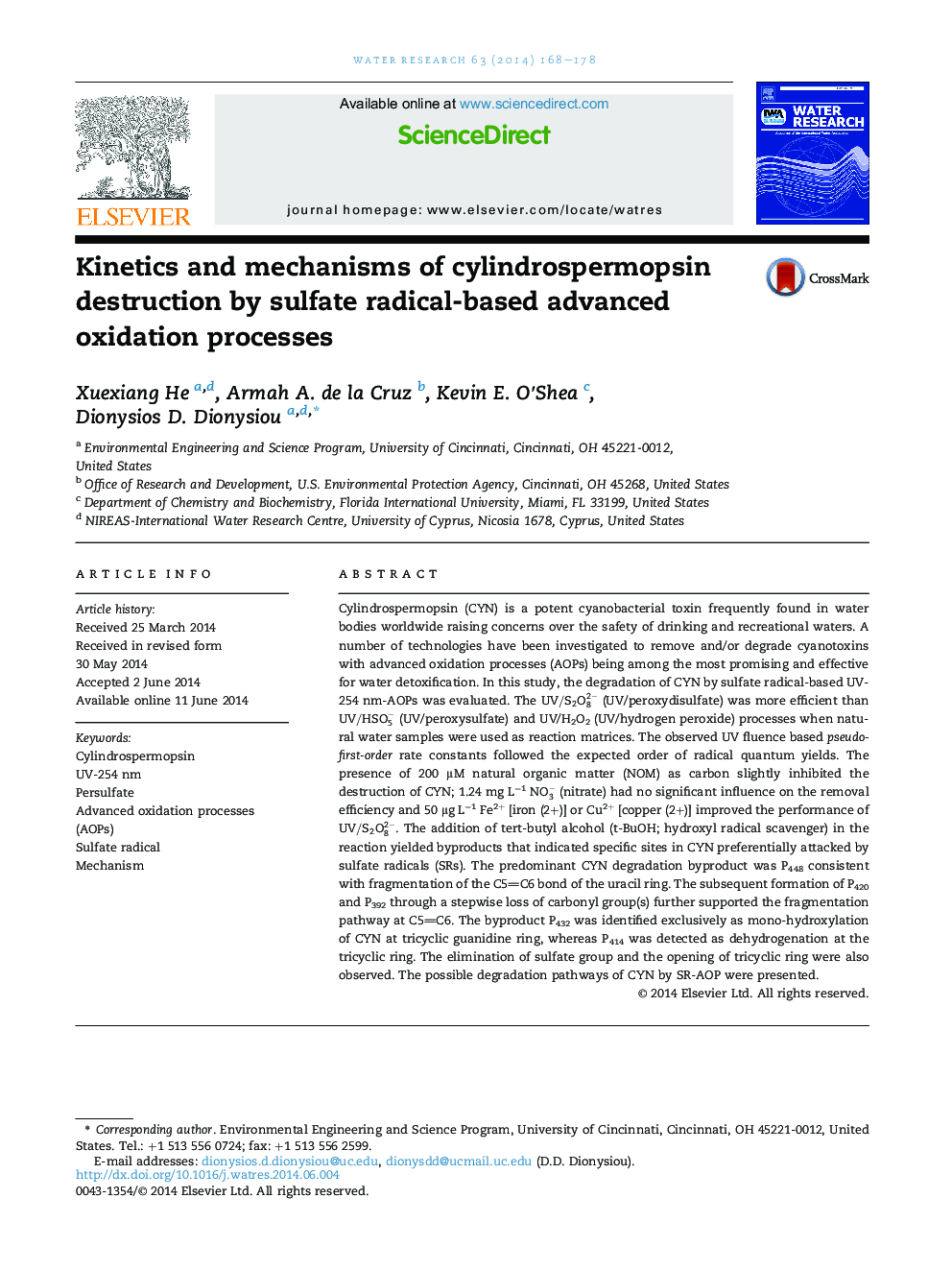| کد مقاله | کد نشریه | سال انتشار | مقاله انگلیسی | نسخه تمام متن |
|---|---|---|---|---|
| 4481470 | 1623105 | 2014 | 11 صفحه PDF | دانلود رایگان |
• Degradation of problematic cyanotoxin cylindrospermopsin was evaluated by various UV-AOPs.
• UV/S2O82− was more efficient than UV/HSO5− and UV/H2O2 in natural water matrices.
• The kobs (cm2 mJ−1) followed the order of radical quantum yields.
• Addition of t-BuOH yielded byproducts revealing strong selectivity of sulfate radical attack.
• Uracil fragmentation, tricyclic ring opening, and elimination of sulfate were observed.
Cylindrospermopsin (CYN) is a potent cyanobacterial toxin frequently found in water bodies worldwide raising concerns over the safety of drinking and recreational waters. A number of technologies have been investigated to remove and/or degrade cyanotoxins with advanced oxidation processes (AOPs) being among the most promising and effective for water detoxification. In this study, the degradation of CYN by sulfate radical-based UV-254 nm-AOPs was evaluated. The UV/S2O82− (UV/peroxydisulfate) was more efficient than UV/HSO5− (UV/peroxysulfate) and UV/H2O2 (UV/hydrogen peroxide) processes when natural water samples were used as reaction matrices. The observed UV fluence based pseudo-first-order rate constants followed the expected order of radical quantum yields. The presence of 200 μM natural organic matter (NOM) as carbon slightly inhibited the destruction of CYN; 1.24 mg L−1NO3− (nitrate) had no significant influence on the removal efficiency and 50 μg L−1 Fe2+ [iron (2+)] or Cu2+ [copper (2+)] improved the performance of UV/S2O82−. The addition of tert-butyl alcohol (t-BuOH; hydroxyl radical scavenger) in the reaction yielded byproducts that indicated specific sites in CYN preferentially attacked by sulfate radicals (SRs). The predominant CYN degradation byproduct was P448 consistent with fragmentation of the C5C6 bond of the uracil ring. The subsequent formation of P420 and P392 through a stepwise loss of carbonyl group(s) further supported the fragmentation pathway at C5C6. The byproduct P432 was identified exclusively as mono-hydroxylation of CYN at tricyclic guanidine ring, whereas P414 was detected as dehydrogenation at the tricyclic ring. The elimination of sulfate group and the opening of tricyclic ring were also observed. The possible degradation pathways of CYN by SR-AOP were presented.
Figure optionsDownload high-quality image (237 K)Download as PowerPoint slide
Journal: Water Research - Volume 63, 15 October 2014, Pages 168–178
